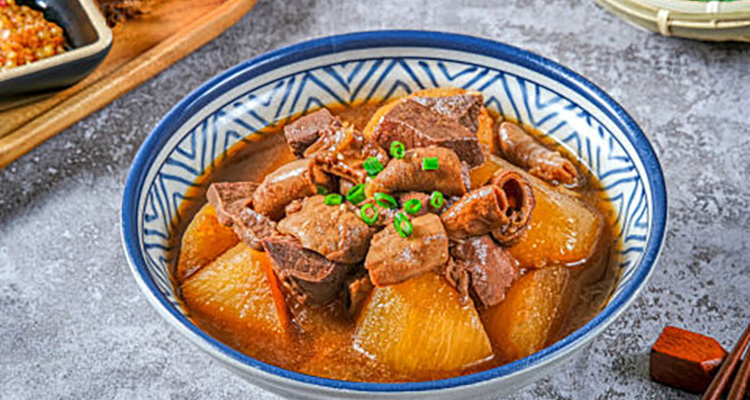Shanxi breakfast: A Bowl of Yang Za Ge
Lead: When the first light hits the Loess Plateau, many Shanxi locals start the day with a steaming bowl of Yang Za Ge — a hearty Shanxi lamb soup that awakens the senses. For travelers, tasting an authentic bowl is the quickest way to connect with Shanxi food culture and local life.
1. A Warm Bowl Through History: Origins of Yang Za Ge
Yang Za Ge is rooted in northern pastoral and agricultural traditions. Early nomadic herders prized using every part of the sheep, boiling heads, trotters and offal into nourishing broths. As these practices blended with Shanxi culinary skills, local cooks added mung-bean or potato vermicelli and pungent aromatics — ginger, garlic, scallion and chili — to balance flavors and reduce gaminess. The dish’s name literally describes slicing and serving mixed sheep parts, reflecting Shanxi people’s blunt, honest culinary language.
2. More Than Food: The Cultural Meaning of Lamb
In Shanxi, Yang Za Ge is more than breakfast; it’s a social ritual and a winter essential. It provides warmth and nutrition during cold months and is a beloved street-food scene at dawn. Office workers, elderly patrons and students alike can be seen sharing this simple pleasure outside longtime shops. The dish symbolizes resourcefulness — using every part of the animal — and the straightforward hospitality of northern China. For visitors, joining locals at a busy stall is an authentic way to feel the pulse of daily life.
3. Quality Ingredients: The Heart of the Flavor
A great bowl relies on fresh, carefully selected lamb and offal. Rightyu (Youyu) county in Shanxi is known for high-quality mountain-raised sheep with milder odor and firmer texture, often preferred for Yang Za Ge. Typical components include chewy tripe, tender liver, soft lung and gelatinous head meat. Shanxi-style vermicelli (potato or mung-bean noodles) soaks up the broth beautifully. Scallions, sliced ginger, minced garlic, chili oil and a spoonful of the rich cooking fat finish the profile, creating layered, satisfying flavors.

4. The Craft Behind the Broth: Making Yang Za Ge
Preparing Yang Za Ge is a lesson in patience. After thorough washing and soaking to remove impurities, the offal is simmered with aromatics for several hours over low heat until tender but still textured, and the broth turns milky and robust. The cooked offal is chilled and sliced into uniform strips. At service, vendors combine measured portions of offal and vermicelli in a bowl and pour boiling original broth over them to awaken the aromas. A final garnish of scallions, cilantro and chili oil makes the bowl visually vivid and aromatic.
5. Tasting Notes: A Bold, Comforting Experience
Start with a spoonful of broth: a rich lamb umami that warms the chest and leaves a gentle peppery heat. Textures alternate between bouncy tripe, silky liver, spongey lung and sticky head meat, while noodles provide a smooth, filling bite. Fresh herbs cut through the richness and chili oil adds depth. The overall sensation is hearty, restorative and deeply satisfying — perfect for a cold morning.
6. How to Eat It Like a Local: Pairings and Etiquette
Locals often pair Yang Za Ge with freshly baked Shao Bing (crisp baked flatbread) or twisted fried dough (Mahua). Break the bread into pieces, soak briefly in the broth and enjoy the blend of dough aroma and meaty soup. A dash of aged Shanxi vinegar can brighten the bowl and cut through fat. Many also sip warm yellow wine alongside the meal for extra comfort. Always eat while it’s hot — the experience is best immediately after serving.

7. Practical Tips for Travelers
- Best time: Breakfast (6:00–10:00) when broths are freshest.
- How to order: Say “one bowl of za ge” or ask for Yang Za Ge; vendors will ask about extra meat, noodles, or spice.
- Spice level: Request “less spicy” (shao la) or “no spice” (mian la) if sensitive to heat.
- Where to find it: Look for busy, longstanding street stalls or small local shops in Taiyuan, Datong, and Quwo — those queues usually signal authenticity.
8. Simple Home Version: A Traveler-Friendly Recipe
If you fall in love with Yang Za Ge, try a simplified home version:
- Ingredients: pre-cooked mixed lamb offal, Shanxi-style vermicelli (or sweet potato noodles), scallion, ginger, garlic, cilantro, chili oil.
- Steps:
. Slice pre-cooked offal into strips.
. Boil water or stock with ginger, add offal to heat through.
. Add softened vermicelli and cook until translucent.
. Season with salt and white pepper.
. Serve in a bowl with minced garlic, scallion, cilantro and a drizzle of chili oil.
Serve with crispy flatbread to mimic the local pairing.

Conclusion and Call to Action
A bowl of Yang Za Ge carries Shanxi’s history, landscape and warmth. It’s unpretentious yet deeply nourishing, and tasting it is one of the most immediate ways to experience Shanxi food culture. When you visit, follow the aroma to a bustling breakfast stall, order like a local, and let this bold, comforting lamb soup become a memorable part of your China journey.


